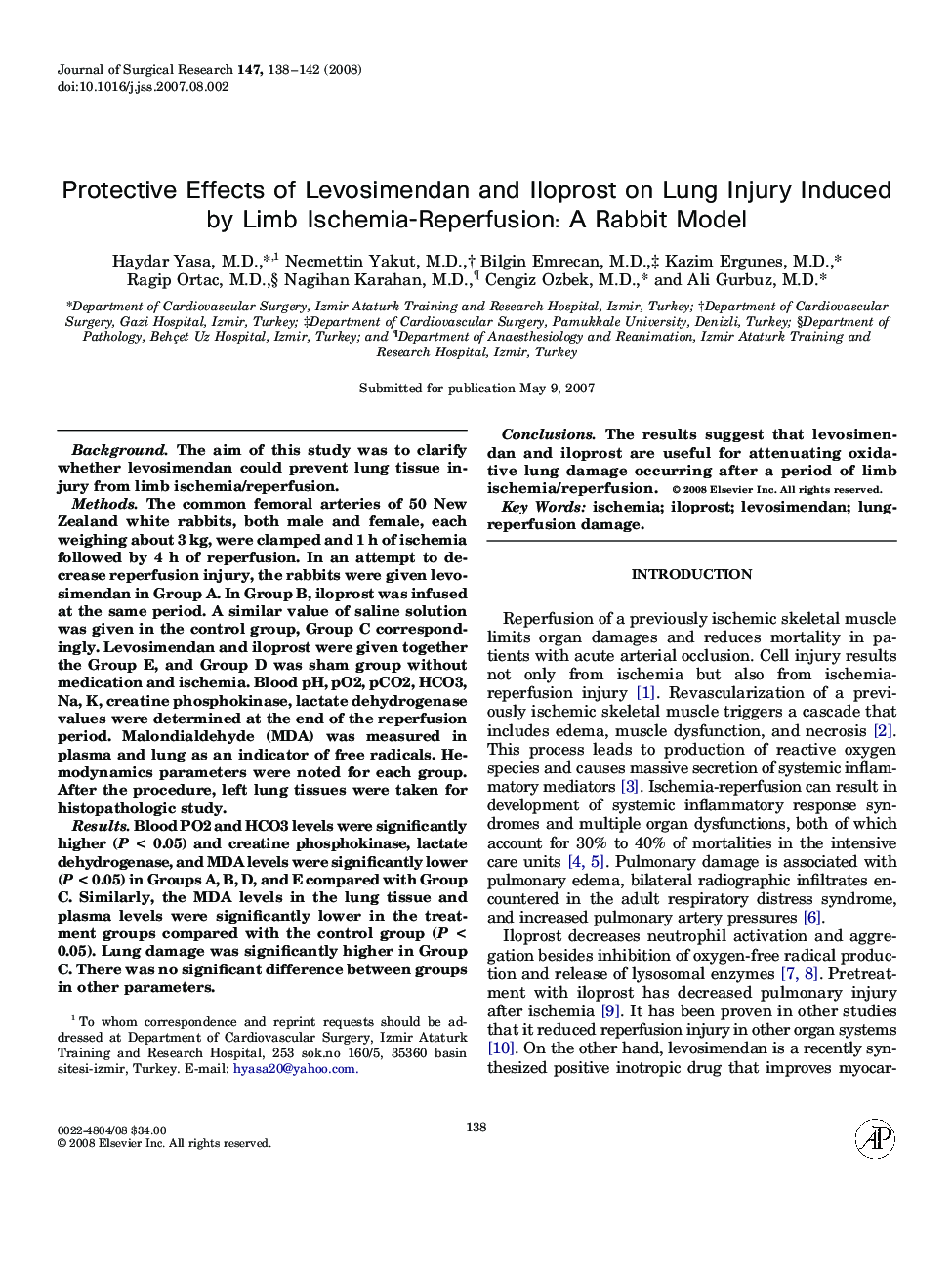| Article ID | Journal | Published Year | Pages | File Type |
|---|---|---|---|---|
| 4304415 | Journal of Surgical Research | 2008 | 5 Pages |
BackgroundThe aim of this study was to clarify whether levosimendan could prevent lung tissue injury from limb ischemia/reperfusion.MethodsThe common femoral arteries of 50 New Zealand white rabbits, both male and female, each weighing about 3 kg, were clamped and 1 h of ischemia followed by 4 h of reperfusion. In an attempt to decrease reperfusion injury, the rabbits were given levosimendan in Group A. In Group B, iloprost was infused at the same period. A similar value of saline solution was given in the control group, Group C correspondingly. Levosimendan and iloprost were given together the Group E, and Group D was sham group without medication and ischemia. Blood pH, pO2, pCO2, HCO3, Na, K, creatine phosphokinase, lactate dehydrogenase values were determined at the end of the reperfusion period. Malondialdehyde (MDA) was measured in plasma and lung as an indicator of free radicals. Hemodynamics parameters were noted for each group. After the procedure, left lung tissues were taken for histopathologic study.ResultsBlood PO2 and HCO3 levels were significantly higher (P < 0.05) and creatine phosphokinase, lactate dehydrogenase, and MDA levels were significantly lower (P < 0.05) in Groups A, B, D, and E compared with Group C. Similarly, the MDA levels in the lung tissue and plasma levels were significantly lower in the treatment groups compared with the control group (P < 0.05). Lung damage was significantly higher in Group C. There was no significant difference between groups in other parameters.ConclusionsThe results suggest that levosimendan and iloprost are useful for attenuating oxidative lung damage occurring after a period of limb ischemia/reperfusion.
